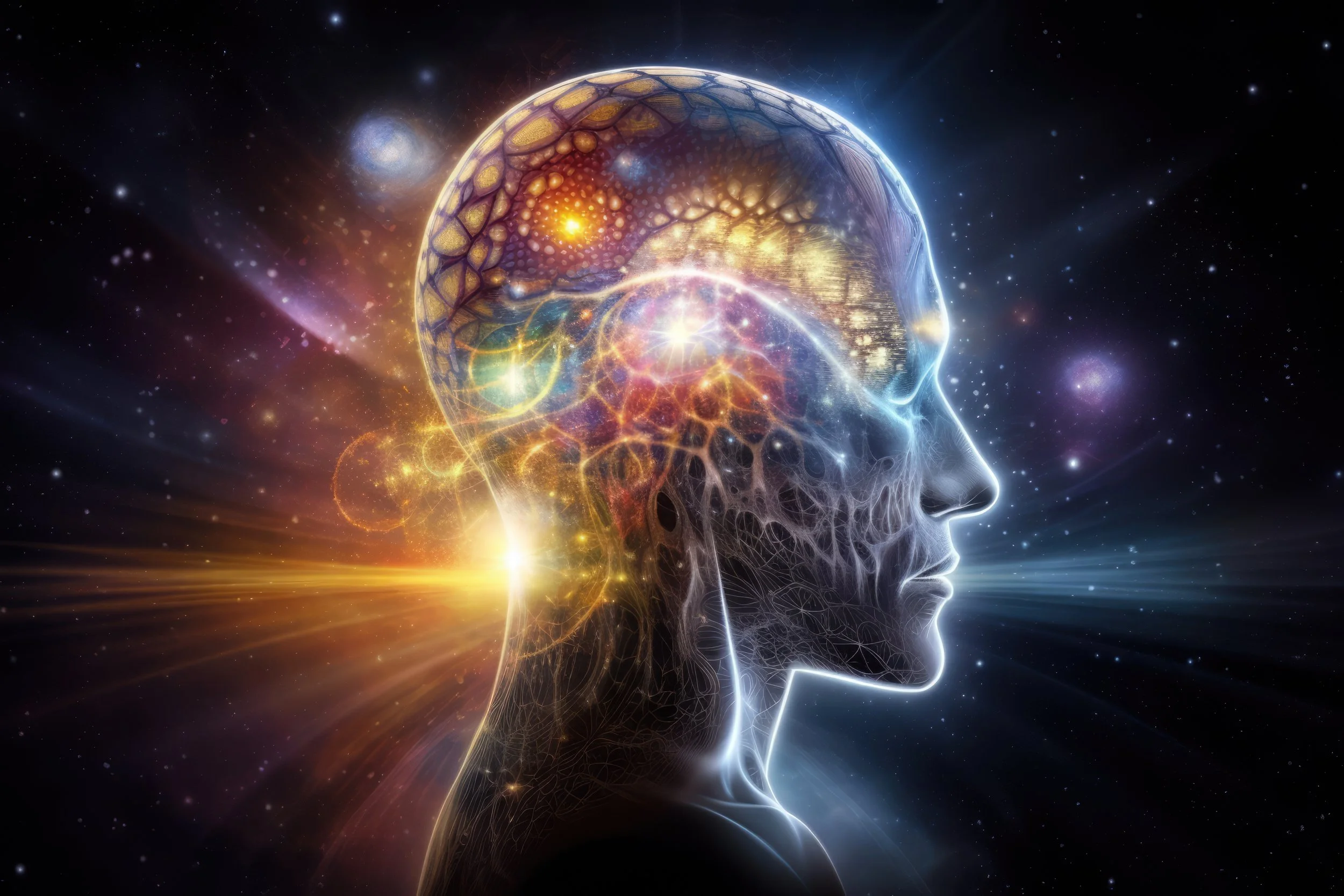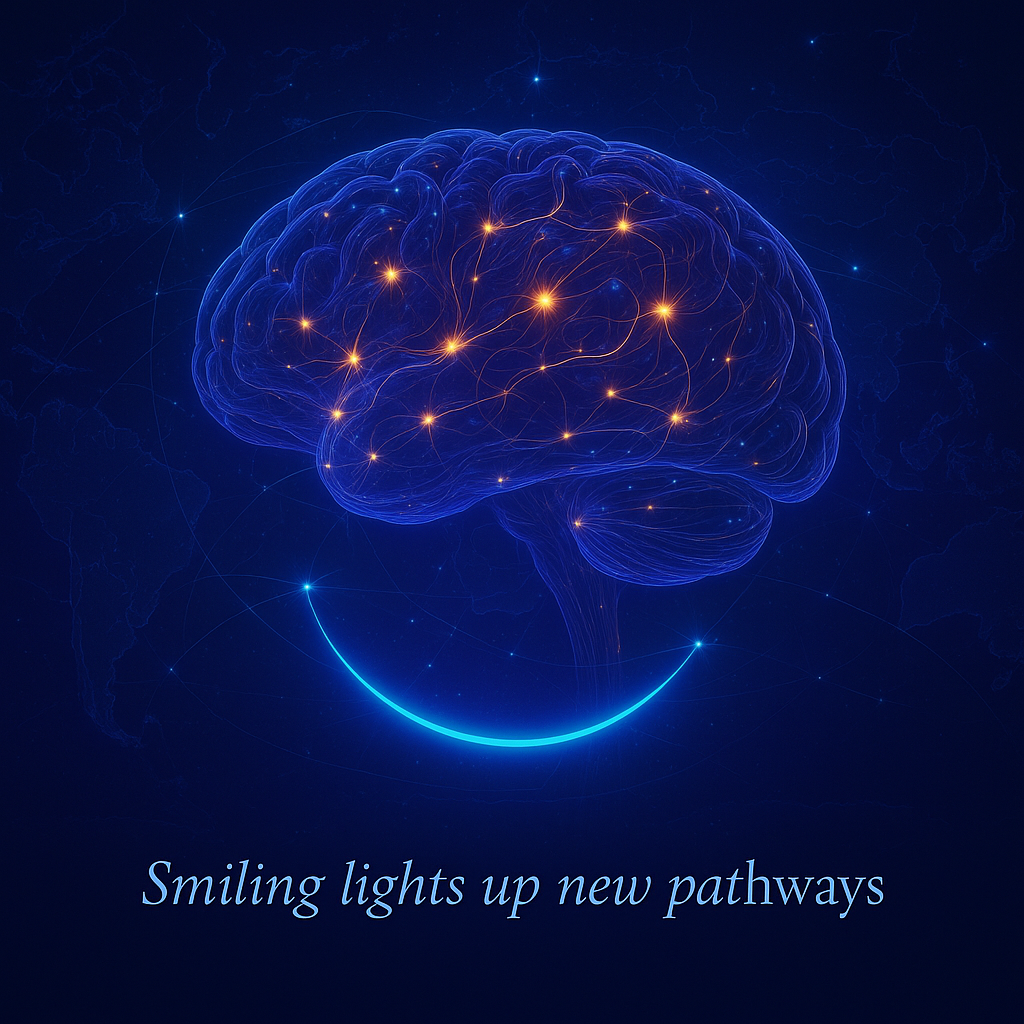Wired to smile
FROM GALAXIES TO EARTH, BRAIN AND SMILING NEURONS,
HE IS LORD OF ALL
20 min read
For decades, the adult human brain was thought to be fixed and unchanging, growing only during childhood. If brain cells were lost, they were gone forever; if one didn’t learn something early in life, it was too late. However, science is proving this untrue.
The brain is not a fixed structure but a living powerhouse capable of change.
Our brain is made of special cells called neurons. There are about 86 billion neurons, each with small projections called dendrites. Dendrites, like antennae, pick up signals from other neurons, forming a complex communication network of around 100 trillion connections. That’s more connections than the stars in our galaxy (1).
The brain uses only 20 watts of power and has been described as the most complex known structure in the universe. The most advanced supercomputers in the world require a million times more power to reach a level of computing capacity comparable to this (2).
A process called Neurogenesis generates new brain cells, or neurons, every day throughout our lives.
The brain can also rewire and reshape based on what we do, think, and experience, through a process called Neuroplasticity (3).
Neuroplasticity gives us the ability to actively rewire our brains; Neuroscientist Dr. Andrew Newberg
Scientists can observe the brain in action through modern brain scans known as functional MRI (fMRI). These scans reveal which areas of the brain light up when we think, feel, pray, or learn. It’s like getting a peek at the brain’s activity map in real time (4).
MIRROR NEURONS
Did you know your brain can mirror someone else’s feelings even without you realizing it?
fMRI scans reveal that specific areas of the brain light up when we see someone smiling, crying, or hurting. These areas are full of special cells called mirror neurons. This type of imitation is called mirroring.
Mirroring plays a crucial role in how we learn to speak, how children imitate adults, and how we perceive joy or pain in someone else’s story (5-7).
The exciting discovery of the human mirror-neuron system demonstrated how our brains build meaningful, shared experiences with others.
SMILING NEURONS
Babies are born with the ability to smile as a reflex. An infant lights up when their mother smiles; they learn to smile by mirroring the expressions of love and warmth they see, especially in their mother’s face.
These smiling neurons respond automatically to the joy and tenderness in the mother’s expression, passing that information through the baby’s brain in real time. It’s one of the first ways we’re wired for connection, through shared smiles and felt emotion (8-10).
Smiling was found to interrupt mood disorders and strengthen the neural ability to maintain a positive outlook.
Smiling stimulates brain circuits that enhance social interaction, empathy, and mood. Looking at a picture of a smiling face involuntarily makes one feel happy.
Happy music can stimulate a smile response and improve one’s mood. Smiling also helps one’s brain when dealing with chronic or severe diseases.
The removal of frown lines by Botox injections decreased a person’s feelings of depression. This fascinating discovery about facial feedback suggests our facial expressions can influence our emotions (11).
Smiling neurons establish pathways for compassion and empathy; they weaken and atrophy if not used.
As life unfolds, cares and worries can reshape our thoughts, and if we forget to smile, those joyful pathways we knew as children may quietly fade.
Psychologist, Donald Hebb, describes that when brain cells are activated simultaneously and repeatedly, their connection becomes stronger: ‘neurons that fire together, wire together,’ meaning the more they work together, the more likely they’ll keep working together in the future.
Brain imaging studies show that altering our thoughts can significantly impact brain function, enabling us to form new communication networks relatively quickly, in as little as seven days.
How Do These Advances in Science Relate to The Truths in The Bible?
Science has only proven ancient words spoken. Nothing is new!
The brain God designed is constantly growing, changing, and capable of healing (12,13).
The science of neuroplasticity doesn’t just show us how flexible the brain is; it reminds us that God created us with the capacity for renewal (12,13).
A Smiling Social Saviour
Smiling and joy were a natural part of Jesus’ ministry. Imagine this scene in Mark 10:14: a smiling Jesus, arms open wide, reaching out to children: ‘Let the little children come to me… and He took the children in His arms and placed His hands on them and blessed them.’
Jesus celebrated life. He attended a wedding in Cana (John 2:1), where joy, music, and dancing were part of the multi-day Jewish tradition. He kept the celebration going when the wine ran out by providing more and even better wine.
You Can Learn To Smile Too
Jesus calls us to love one another (John 13:34), and Neuroscience confirms that love, empathy, and forgiveness not only touch hearts but also reshape our brains.
But what if that doesn’t come naturally to you?
Neuroplasticity is God’s gift to us. In Romans 12:2, Paul encourages us to renew our minds. When we harness the power of neuroplasticity to take advantage of our brain’s ability to rewire, it is neuroplasticity in action (12, 13, 14).
Our brains can change in response to attention and focus, and we have authority over our thoughts and where we place our mental focus (Colossians 3:2).
We are encouraged to ‘be inwardly renewed day by day’ (2 Corinthians 4:16). An invitation into daily transformation from the inside out.
Science confirms scripture that new brain cells are formed each day, regardless of age and that these new cells can form new connections.
Paul’s language resonates powerfully with what we now know: that transformation is a daily process, allowing re-creation from within.
This revelation opens up a world of possibilities for personal growth at any stage of life, instilling a sense of hope and inspiration.
When we take every thought captive (2 Corinthians 10:5), science shows that our brain circuits start to rewire; neurons wiring and firing together, bringing healing and restoration.
Science shows that social mirror neurons support God’s design for healthy, healing relationships.
What a magnificent match, both spiritually and biologically, we are being renewed daily.
"God desires to help us manage our minds and bodies in a way that benefits us and does not harm us,” Dr. Lee Warren.
Reflection:
A tired and thirsty man, after walking for almost 13 hours through rocky, hilly terrain, approaches a well at noonday. Breaking all the cultural rules, he speaks to the Samaritan woman. Reaching across decades of bitter enmity, in one simple gesture, he casts aside social categories and asks: ‘Will you give me a drink?’ (John 4).
The woman, an outcast, reviled and rejected, ventures out into the oppressive heat, confident that condemning eyes would not be at the well at such an hour. She sees the Jewish man and steps back in surprise, distancing herself from him as she braces for rejection. Instead, the man smiles, offering to share her cup.
Will you tarry with me in this story? Jesus, sitting with an outcast woman in the scorching midday heat. Jesus, smiling, meets the eyes of a woman long accustomed to being unseen. His gaze mirrors her pain and rejection. It has been so long since anyone accepted her… smiled with her. And then she realizes: He knows. He knows all about her, yet he receives water from her; her face breaks into a smile.
She, the rejected and despised, is renewed. Freed to experience joy, she runs to tell the very folks she has been avoiding,
I ponder the story…. I am both the man at the well and the woman who approaches it.
I am the one already at the well waiting! I am a follower of Jesus. Yet as I sit quietly and look inward, I examine my own biases and categories. Would I view her with scorn? Would I reach across borders to others rejected by the world I live in?
And I am the woman carrying the remnants of shame and rejection hidden deep in the crevices of my heart.
I, too, am found out… seen. I, too, drink deeply from the well of mercy. In that moment, something rewires, reshapes, and my mind starts to renew.
Pause a moment:
1. Where in your life do you feel unseen, misunderstood, or quietly carrying shame, and how might Jesus be waiting to meet you there, with a smile?
2. Is there someone near you culturally, socially, or emotionally, whom you’ve passed by at the “well”? What would it look like to pause, smile, and reach across that divide?
Sources for Further Reading:
1.https://www.psychologytoday.com/ca/blog/consciousness-and-beyond/202309/the-staggering-complexity-of-the-human-brain
2. https://news.mit.edu/2019/neurons-dendrite-role-computation-0606
3. Andrew Newberg, MD. How God Changes Your Brain, 2009. Ballantine Books NY.
4. Imitating and exploring the human brain's resting and task-performing states via brain computing: scaling and architecture. Lu W et al Natl Sci Rev. 2024 Mar 1;11(5) doi: 10.1093/nr/nwae080
5. Mirror neurons 30 years later: implications and applications, Luca et al. Trends in Cognitive Sciences, 2022 Volume 26(9)
6. The Mirror Neuron System. Cattaneo and Rizzolatti, Arch Neurol. 2009;66(5):557–560. doi:10.1001/archneurol.2009.41
7. https://positivepsychology.com/mirror-neurons/
8. What's in a smile? Maternal brain responses to infant facial cues. Pediatrics. 2008 Jul;122(1):40-51. doi: 10.1542/peds.2007-1566
9. https://www.cbc.ca/news/science/baby-s-smile-activates-reward-centres-in-mom-s-brain-mri-shows-1.743866
10. Infant social interactions and brain development: A systematic review. Neurosci Biobehav Rev. 2021 Nov;130:448-469. doi: 10.1016/j.neubiorev.2021.09.001.
11. Botox Injections may Lesson Depression. Makunts et al. Post-marketing safety surveillance data reveals antidepressant effects of botulinum toxin across various indications and injection sites. Sci Rep 10, 12851 (2020). https://health.ucsd.edu/news/press-releases/2020-07-30-headline-news-botox-may-lessen-depression
12. Neurosurgeon, War Veteran, and author Dr. Lee Warren’s Book "Hope is the first dose." And The Dr. Warren Podcast-https://www.wleewarrenmd.com/podcast/
13. https://www.psychologytoday.com/ca/contributors/w-lee-warren-md-facs
14. https://www.psychologytoday.com/us/blog/the-art-of-self-brain-surgery/202309/the-art-of-self-brain-surgery
15. https://www.healoutreach.org/heal-outreach/praying-your-way-to-a-better-brain-the-neuroscience-of-faith
16. Restoring the Spirit through the Redemption of Memory. Odor, J. Religions 2024, 15, 1160. https://doi.org/10.3390/rel15101160

